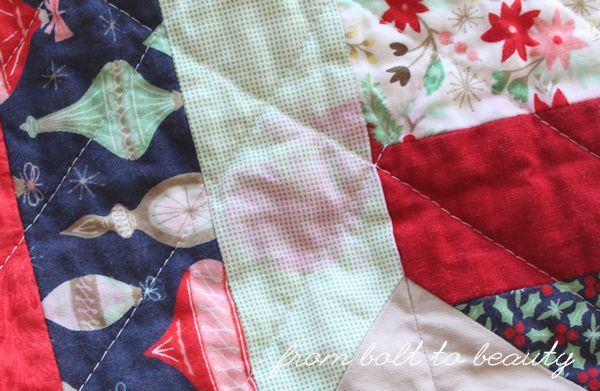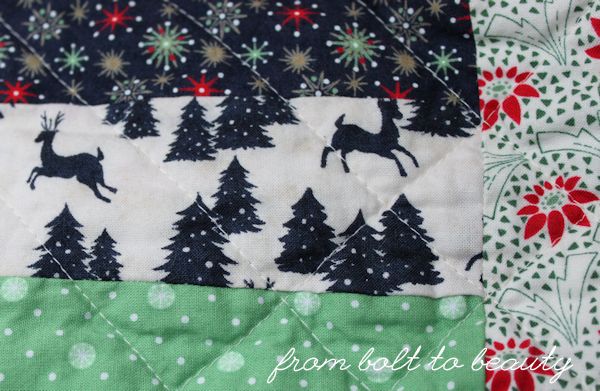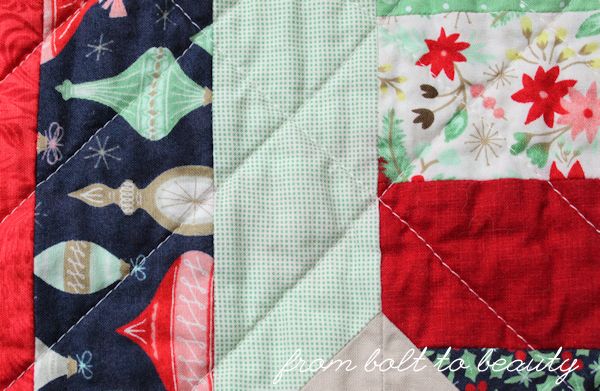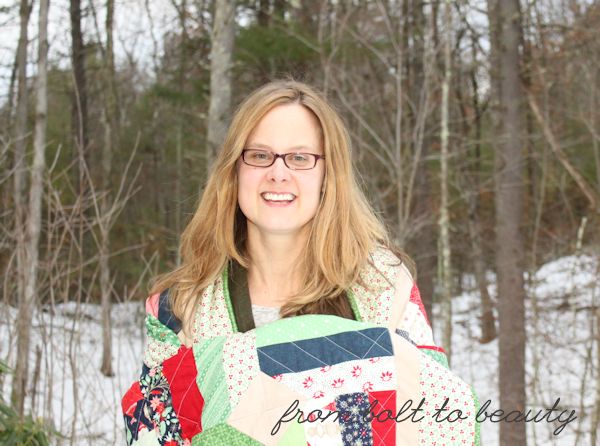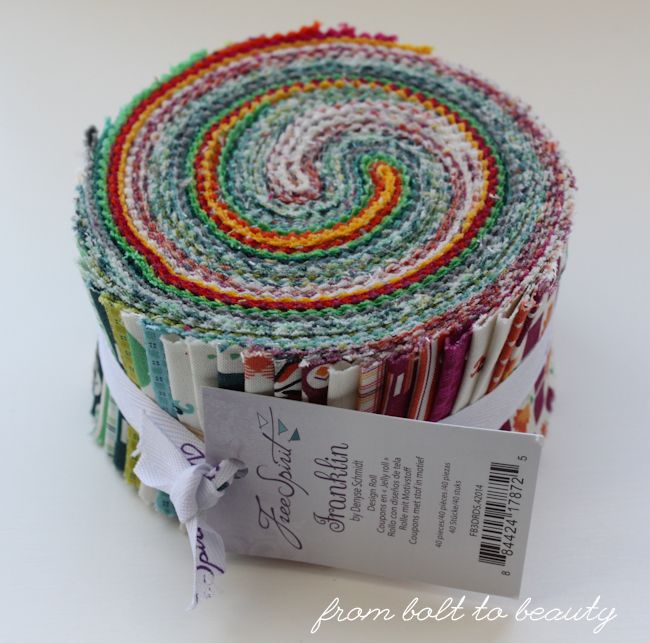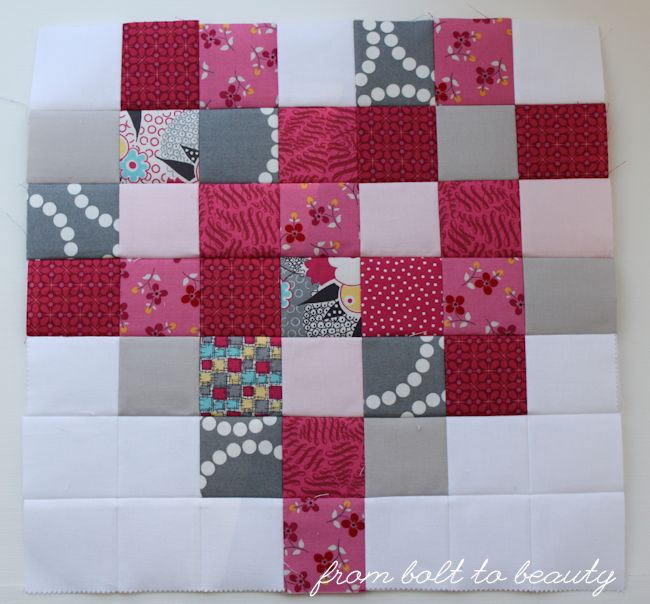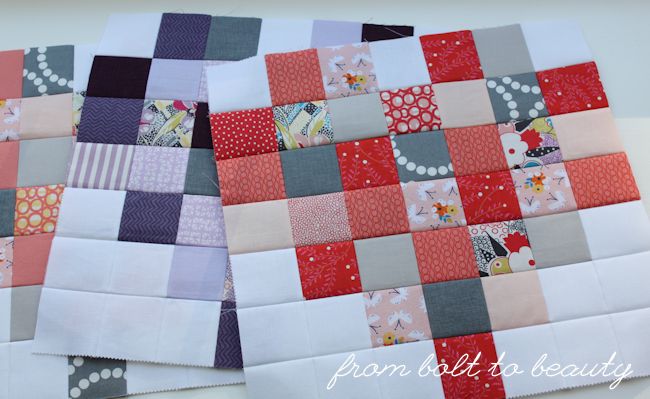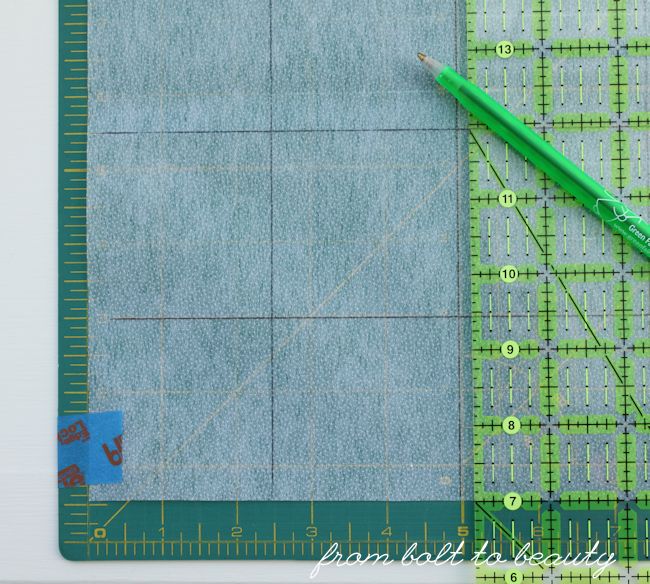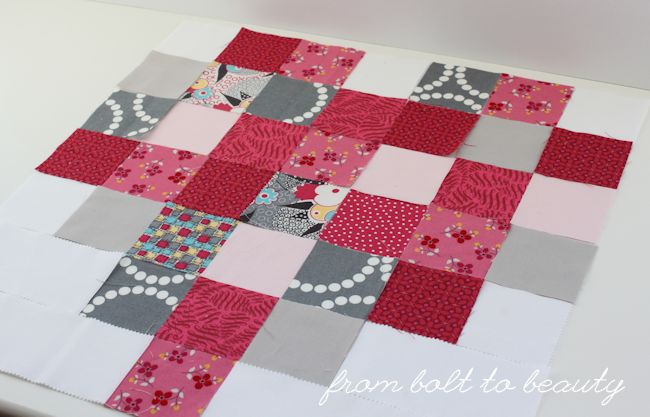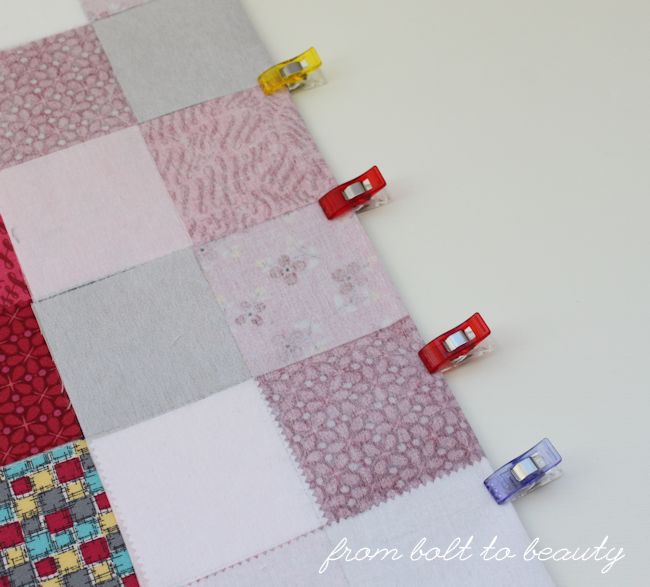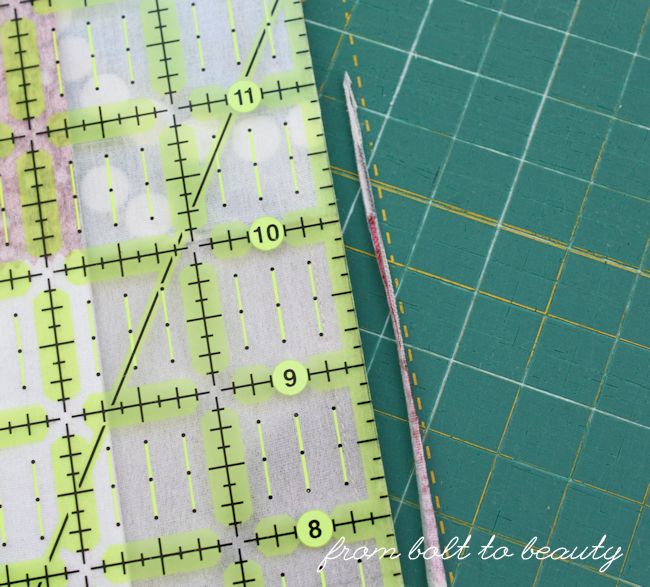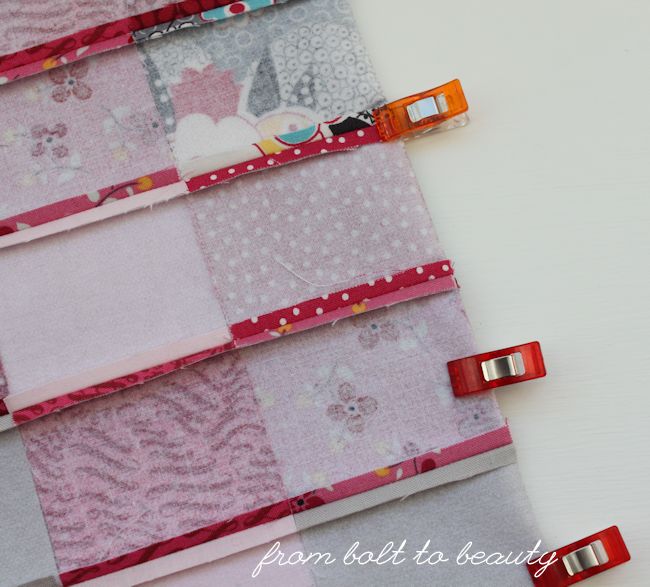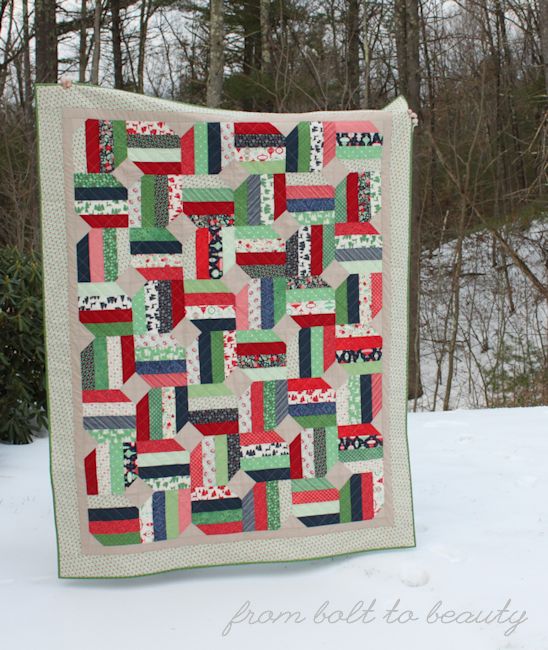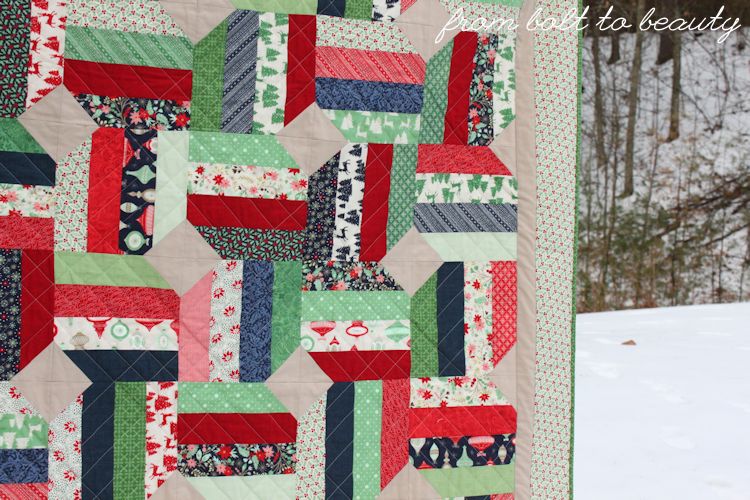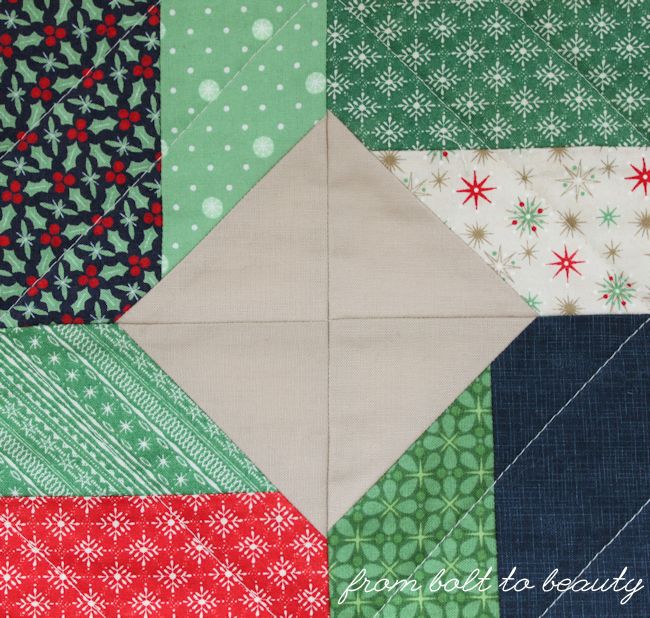I’ve been meaning to make a Bonnie and Camille quilt of epic proportions, and I’ve wanted to make an Amy Butler quilt of similar epic-ness. My thought was that these quilts-to-be would be a spectacular cross-section of those designers’ work, and I would keep either project for me, me, me! Maybe this was the pattern I’ve been waiting for?
Those designer-specific quilts would require buying fabric—perhaps a lot of fabric. Then I realized I had the necessary fabric on hand already: my 40-fat quarter bundle of Basic Grey’s Mon Ami. I wouldn’t do a designer-specific quilt; I’d home in on one gorgeous fabric line by one of my favorite design houses!
Using Kona Snow as the outline for each of the pluses, I started cutting and sewing. My goal is a throw-size quilt, requiring 30 blocks. I have 20 done, 10 more to go. Yes, this quilt is for me, me, me!
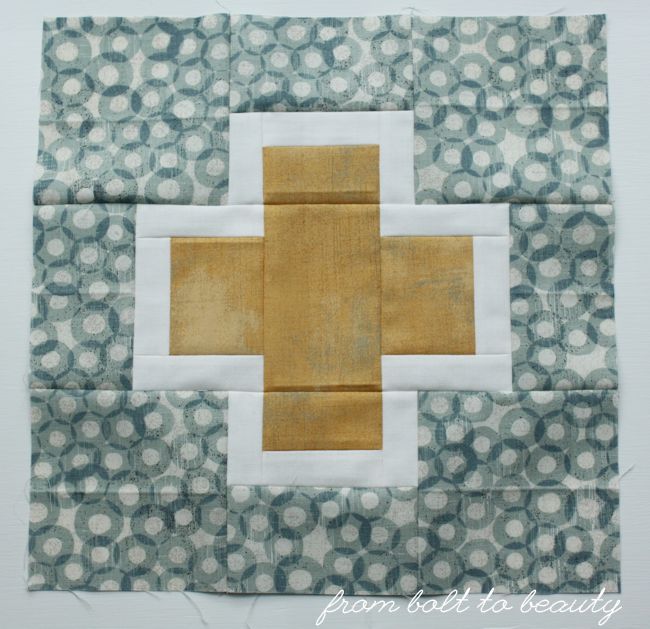 |
| This is my favorite block. I love the combination of blue and yellow. |
 |
| The grays in this block make me pretty happy, too. |
As I’m taking stock of this work in progress, two thoughts come to mind. First, I really love the combinations of fabrics in shades of blue, gray, yellow, and red. I’m not feeling the green as much. What do you think? Should I omit the green fabrics? I would have to remake four blocks.
 |
| Here is the version with greens. |
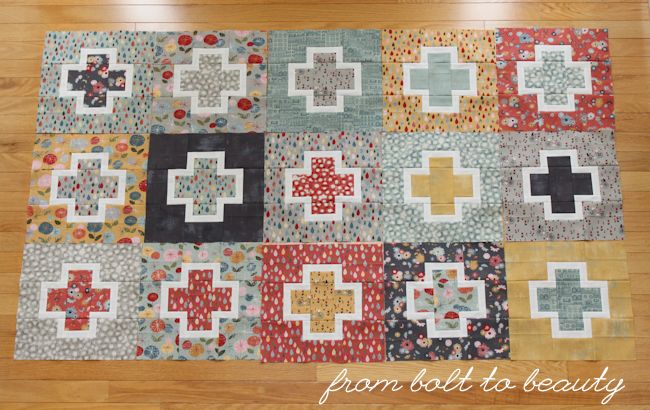 |
| And here is the non-green version. I think this is the winner, friends! |
Second, this is an unusual project for me to sew. My quilty brain doesn’t think in terms of making one complex block (as opposed to, say, a half-square triangle block) and repeating it over and over again in a standard grid. There’s beauty in it, to be sure—I’ve gotten good at churning out these 12-inch blocks, and I find some peace in the repetition. I can think of only two other quilts like this that I’ve made: my Lotus Blossom Quilt and my Dogwood Blossom Quilt. I guess I’m the non-block quilt maker. It seems like a bizarre observation to make, but it’s true for me and the quilts I tend to be drawn to.
Now it’s your turn to chime in. Do you have any thoughts about the green-fabric issue? What generalizations can you make about your own quilt projects? Is it a palette that you tend to gravitate toward? Do you have a propensity for a particular design or technique? Let the rest of us know in the comments.
Linking up to Let’s Bee Social, WIP Wednesday, and Needle and Thread Thursday ...


